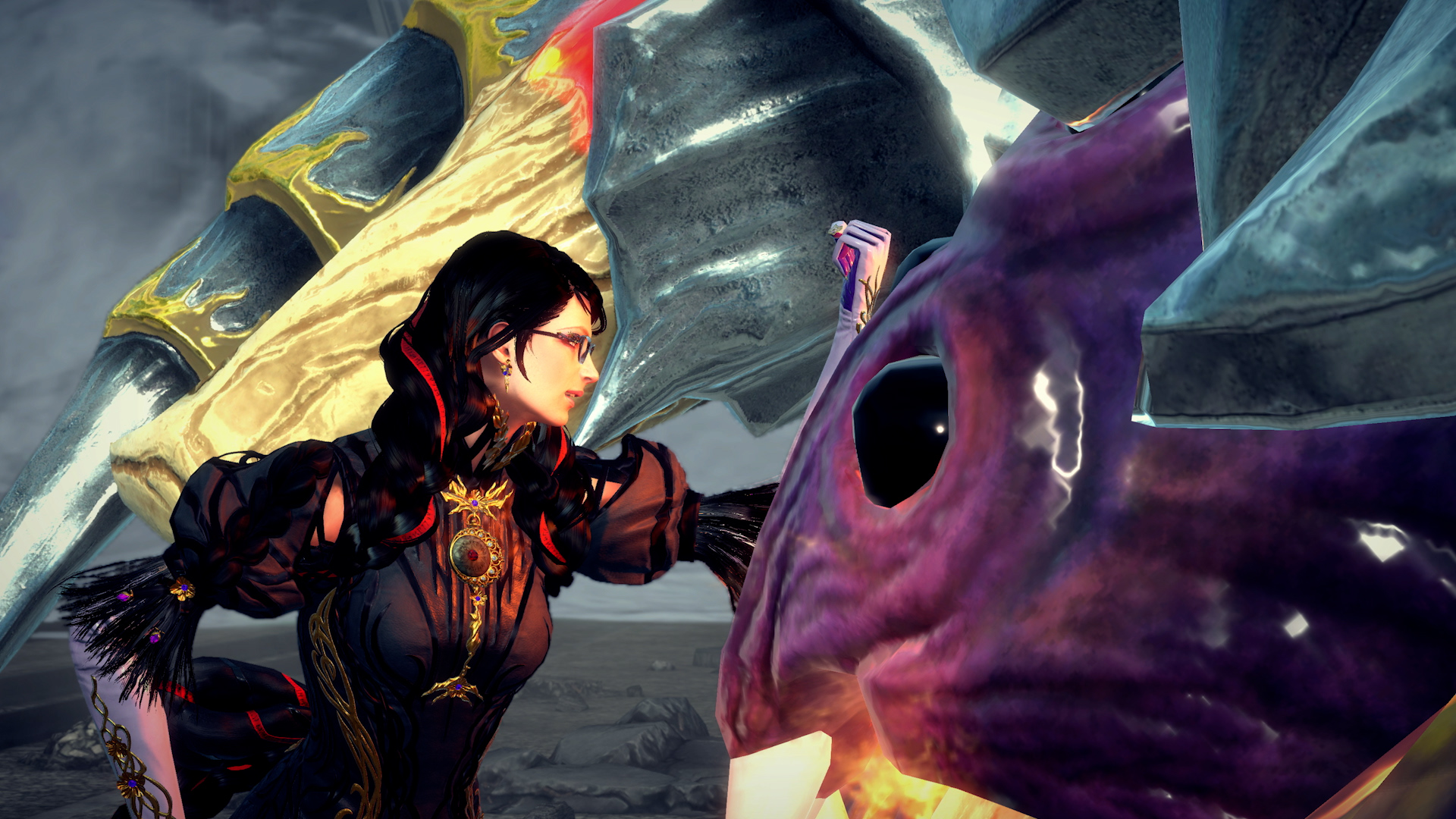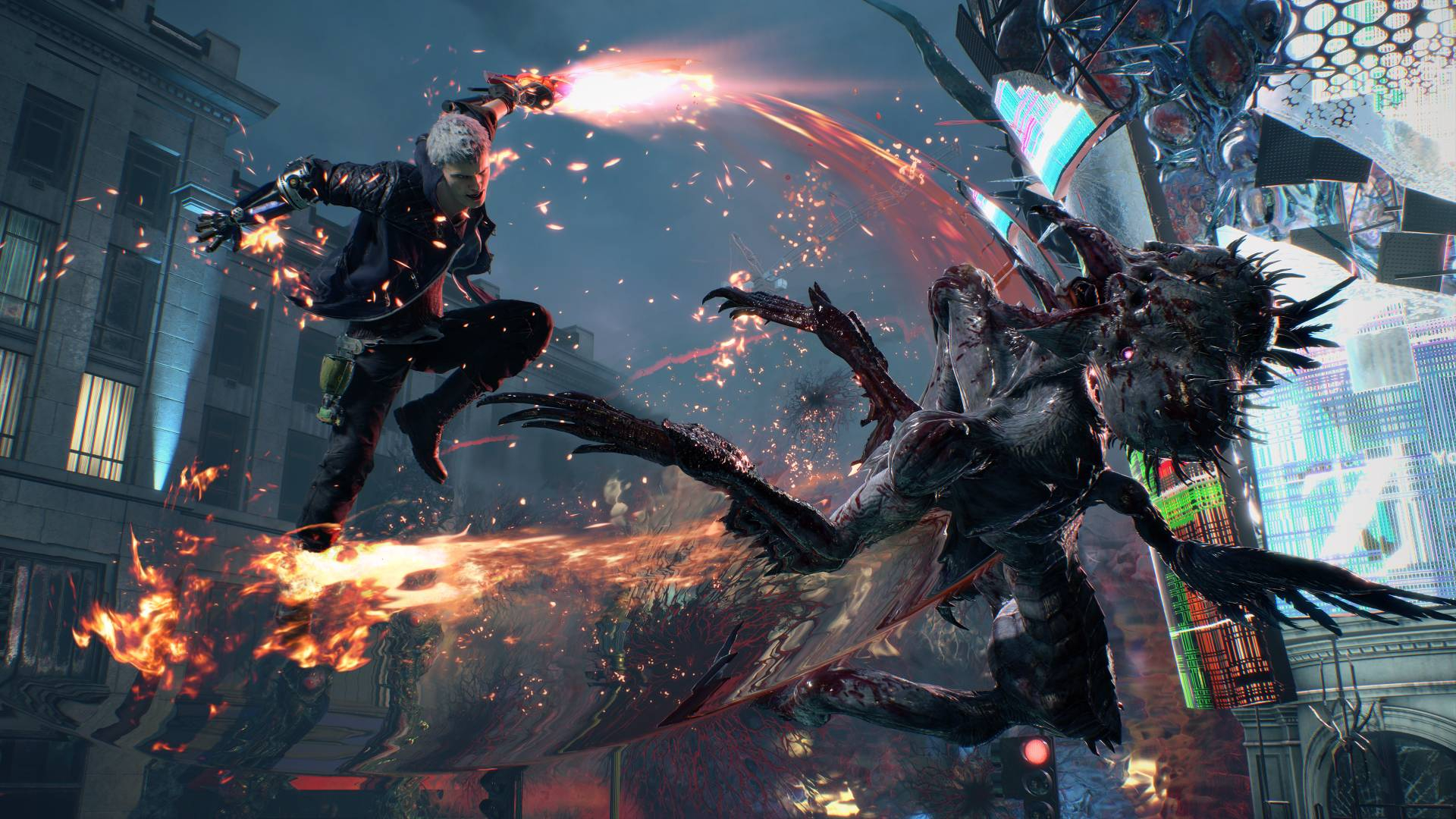What Bayonetta 3 can learn from Devil May Cry 5
Devil's in the details

It’s been eight years since Bayonetta 2 released on the Wii U, and outside of turning up in Super Smash Bros., the Witch has mostly been laid dormant waiting for her next adventure.
With Bayonetta 3 upon us, let’s hope she’s used the time to learn from her competition.
Besides the great (but budget-constrained) Transformers Devastation, developer Platinum Games hasn’t made a traditional action game since Bayonetta’s last adventure. Instead, it’s worked on action RPGs like Nier Automata and Astral Chain (we’re just going to skip over Babylon’s Fall). And while Platinum was away, the genre changed.
While Bayonetta has been on ice, Capcom released Devil May Cry 5, which was an absolute banger. The last game came out in 2013, and that was by a third party developer, so there was a similarly long wait between titles for players. With DMC5, Capcom’s band of demon hunters instantly reclaimed their place back at the top of the action game mountain. And, while Platinum knows its business, I hope it’s been taking notes from DMC5.
Character variety is important

Back in June, Platinum revealed that Bayonetta 3 will feature Viola – an Umbra Witch in training – who teams up with Bayonetta and the gang for this adventure. While the series has had other playable characters in the past, DMC5 managed to avoid a trap side characters often fall into, and hopefully Bayonetta 3 does, too.
What worked so well in DMC5 is that each of the game’s four characters are wholly unique, with an equal amount of love and attention put into their move-sets. Side characters in action titles can often feel undercooked. A good example is No More Heroes 2’s Shinobu and Henry; one feels underdeveloped and the other just feels like a worse version of the protagonist.
Nero and Dante use swords and guns as their main forms of attack, yet it’s immediately apparent when you get your hands on them how different they really are. Dante’s personality of a fast-paced trickster feeds into a move-set that overwhelms opponents with his speed and plethora of moves. In contrast, Nero is a younger, angstier demon hunter whose moveset focuses on hard-hitting, rage-fuelled attacks that beat demons to a pulp.
Get daily insight, inspiration and deals in your inbox
Sign up for breaking news, reviews, opinion, top tech deals, and more.
Whether taking a lead from Capcom or not, Viola is a more developed side character than we've seen before in Bayonetta. While her own moveset certainly isn’t as expansive as the laundry list Bayo’s turned up with, Viola is still brilliant fun to play as – her katana combos and use of tag-in demon Cheshire allowing her to gel with Bayonetta 3’s style, while offering something entirely her own. In fact, the only issue with Viola is that she isn’t used in the campaign more, only being playable for a handful of missions.
Adaptive soundtracks rock

One of Devil May Cry 5’s defining features was its use of character-specific theme songs and adaptive music. The burst of serotonin that happens when you finally hit that S-rank with Vergil; followed by ‘I am the storm that is approaching’ blasting out of your speakers, elevates a game that is already a badass power fantasy to a whole other level. Games like Bayonetta 3 should learn from this, especially seeing as each game in the series up to this point has its own vocal themes for Bayonetta. Take it up a notch, Platinum, tie the music to what I’m doing on screen.
Don’t skimp on side content
Action games can often be generously replayable, pushing you to S-Rank every level, and sometimes offering unlockable endings and New Game Plus modes; it's nice to have other extras woven in. I spent hours playing through DMC’s Bloody Palace mode, in which you fight through 101 floors of challenges. I want Platinum to introduce Bayonetta’s take on the concept. While Bayonetta 2 was a step in this direction thanks to the Tag Climax mode, which had you face off against hordes of enemies in co-op, either with a friend or an AI companion, I want more single player-focused content.
And, if it’s not in there at launch, a lot has changed since the launch of Bayonetta 2. We’ve seen plenty of games given new modes after release; just this year, Housemarque updated Returnal with an Endless Mode.
In his review, Rhys called Bayonetta 3 a hugely ambitious sequel, one that pushes the Nintendo Switch beyond its limits, but while Platinum are masters of this genre, that’s not to say it can’t learn from its peers.

Scott has been freelancing for over two years across a number of different gaming publications, first appearing on TechRadar in 2022. He has also written for the likes of PC Gamer, Eurogamer, Push Square, The Daily Mirror, and others. He's typically rambling about Metal Gear Solid, God Hand, or any other PS2-era titles that never get sequels.